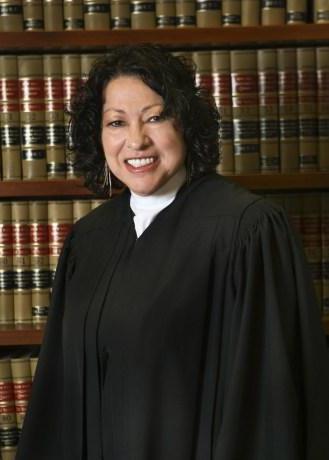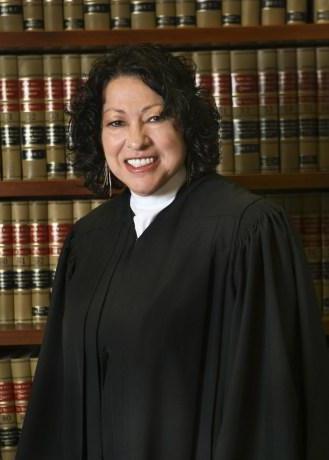 Sonia SotomayorGreen groups are throwing their weight behind Sonia Sotomayor, President Obama’s nominee to the Supreme Court, even though she doesn’t have much of a record on environmental decisions and hasn’t always ruled in favor of enviros.
Sonia SotomayorGreen groups are throwing their weight behind Sonia Sotomayor, President Obama’s nominee to the Supreme Court, even though she doesn’t have much of a record on environmental decisions and hasn’t always ruled in favor of enviros.
More than 60 environmental and Native American groups — including the Sierra Club, Earthjustice, Greenpeace USA, the League of Conservation Voters, and the Center for Biological Diversity — have sent a letter [PDF] to leaders of the Senate Judiciary Committee offering unqualified support for her nomination. The Senate Judiciary Committee will be holding confirmation hearings on Sotomayor this week.
“Despite her long tenure on the federal bench, Judge Sotomayor has sat on relatively few environmental cases,” the groups write in their letter. “Judge Sotomayor’s record evinces no clear bias in favor of or against environmental claims. Instead, it reflects intellectual rigor, meticulous preparation, and fairness. … Her impeccable credentials, wealth of experience, and exceptional legal mind will benefit the Court and the nation.”
Sotomayor’s most significant environmental ruling was in the case Riverkeeper, Inc. v. EPA, heard by the U.S. Court of Appeals for the Second Circuit in 2007. As Kate Sheppard explains in an examination of Sotomayor’s green record, the case centered on whether the U.S. EPA should be allowed to consider the cost-effectiveness of measures to protect fish and other aquatic life in rivers and lakes near power plants. Sotomayor sided with the enviros, writing what Earthjustice calls “a careful 80-page opinion upholding critical Clean Water Act safeguards.” The Supreme Court later reversed that ruling.
Environmental issues are not expected to figure prominently, if at all, in Sotomayor’s confirmation hearings. But if she’s confirmed, she’ll play a major part in shaping environmental law.
“As recent, closely divided decisions demonstrate, the Supreme Court is playing a crucial role in environmental protections,” says Glenn Sugameli, senior policy counsel at Earthjustice.
Climate change, the biggest environmental issue of all, may come before the court again soon. In its landmark 2007 ruling on climate, Masschusetts vs. EPA, the Supreme Court cleared the way for the federal government to regulate greenhouse gases. If Congress passes a climate bill this year, the legislation will “will face of barrage of legal challenges from industry, some of which will find their way to the high court,” says Richard J. Lazarus, a director of the Supreme Court Institute at Georgetown University Law Center.
In its most recent session, the court has not been favorable to environmental protection. Reports The New York Times:
The Supreme Court heard five environmental law cases in the term that ended [on June 29], and environmental groups lost every time. It was, said Richard J. Lazarus … “the worst term ever” for environmental interests.
The court allowed Navy exercises using sonar that threatened whales off California. It limited the liability of companies partly responsible for toxic spills. It made it harder to challenge Forest Service regulations and easier to dump mining waste into an Alaskan lake. And it allowed the Environmental Protection Agency to use cost-benefit analysis to decide how much marine life may be killed by cooling structures at power plants.
Of course, Sotomayor isn’t likely to change that dynamic. She would replace retiring Justice David Souter, who was a dependable vote on environmental cases. Environmentalists’ best hope is that she will follow his lead — and that Obama will get to appoint one or two more justices.
—–
Here’s what the 60-plus enviro groups wrote about Sotomayor’s green record in their letter to the Judiciary Committee [PDF]:
She wrote a notable Clean Water Act decision, methodically analyzing and resolving various conservation, state, and industry challenges to a regulation designed to protect fish from being killed in the cooling water intake structures at large power plants. While a divided Supreme Court reversed one of the more than a dozen rulings in the case, her decision reflects well-researched, thorough, and thoughtful legal analysis that probes the statute, its context, legislative history, and judicial precedent to discern and remain true to congressional intent. The Second Circuit has yet to issue a decision in a public nuisance case brought against utilities for harm caused by power plant greenhouse gas emissions, but observers praised Judge Sotomayor’s preparation and deep engagement in the complex issues at oral argument. Beyond the decisions she has written, Judge Sotomayor joined a decision upholding a Vermont law requiring that labels inform consumers that certain products contain mercury and must be disposed of as hazardous waste, although she also joined a Clean Air Act decision that went against environmental litigants.



